Hybridizing
Strategize Before You Do Anything
The main goal of hybridizing hibiscus is to improve the overall aspects of your ideal plant. One of the pitfalls to hybridizing hibiscus is to focus solely on the bloom outcome while ignoring other important characteristics like plant quality, bloom presentment, ability to bloom and bloom size. There really is no right or wrong to hybridizing hibiscus as far as the outcomes one achieves but we here at the SCHS look to the future and see the importance of keeping in mind all these factors so that we can propel hibiscus forward with ever improving plants as well as more and more beautiful blooms.
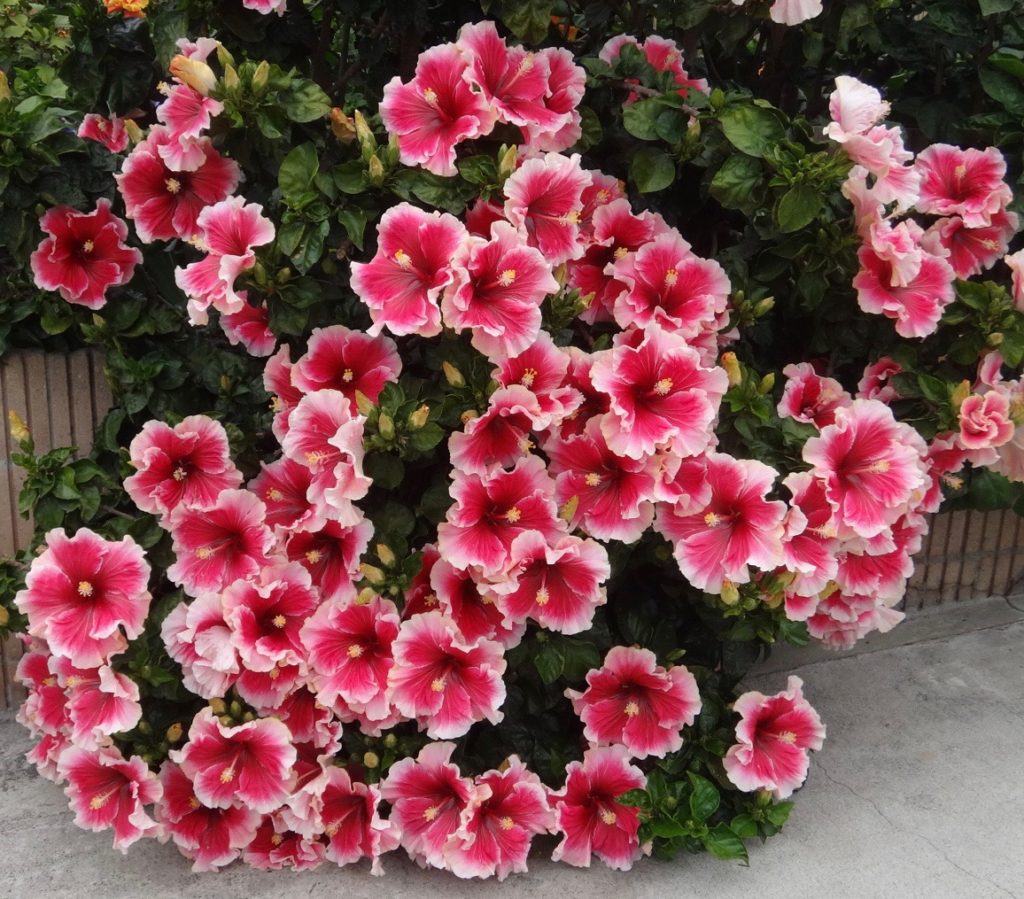
With this in mind the first step before you do any cross pollinating is to consider what your goals are and how genetic traits come into play. Thanks to the International Hibiscus Society’s vast database of registered cultivars we can use their search engine to see not only which cultivars are good parents but also what type of genes they tend to pass along. IHS Search Engine.
For those of you new to hibiscus we always list the parentage in the order of pod parent (mother) x pollen parent (father). Anytime parents are listed the left side is the mother and the right side is the father. (Ex: Magic Crystal x Tahitian Imperial Queen)
Start searching cultivars as a mother or father to not only see how often they are successful parents as either a pollen (father) or pod (mother) parent or as both sometimes but also if they tend to pass along certain dominant genetic traits. For instance you might find a cultivar often has children that have large sized blooms or get splashy patterns or maybe it is good at letting the other parent pass along their genes while maintaining one distinct feature like magenta blooms or banded color patterns. This is exactly the same gene mixing and outcomes a human male and female make when conceiving a child.
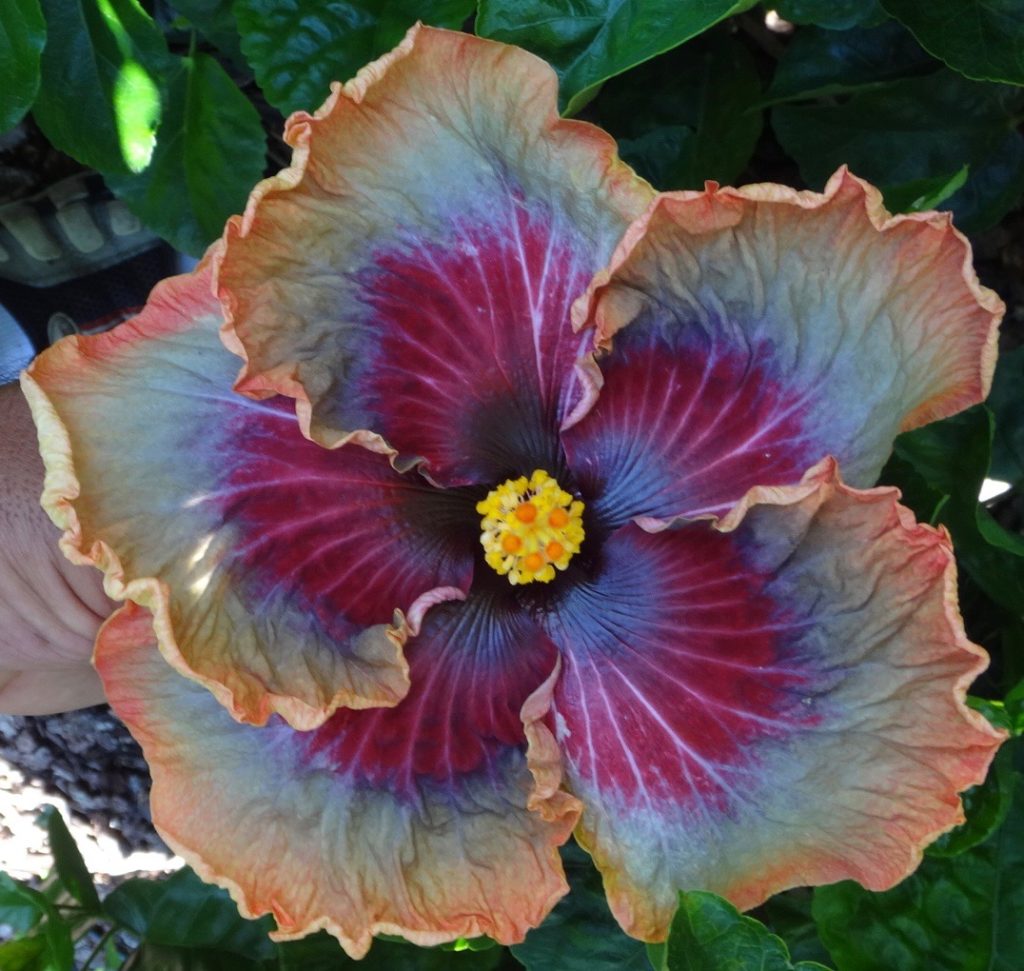
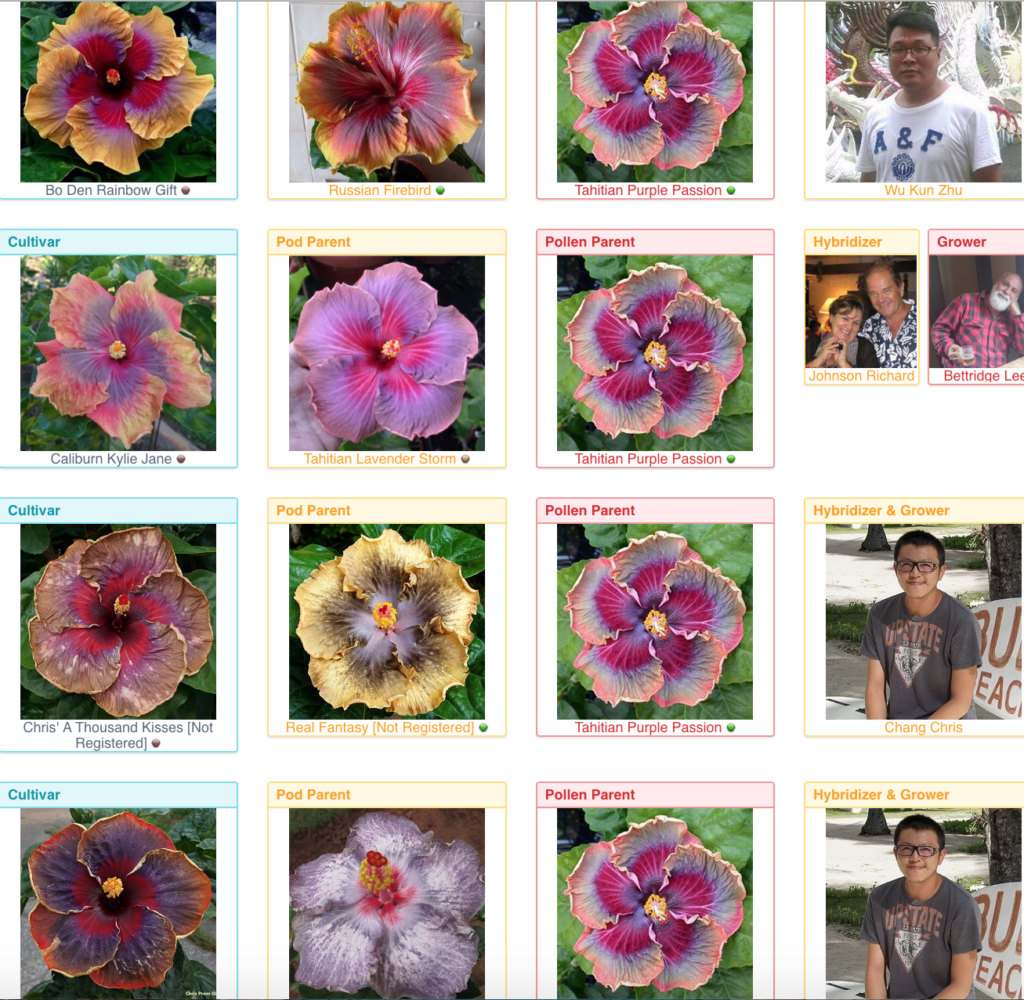
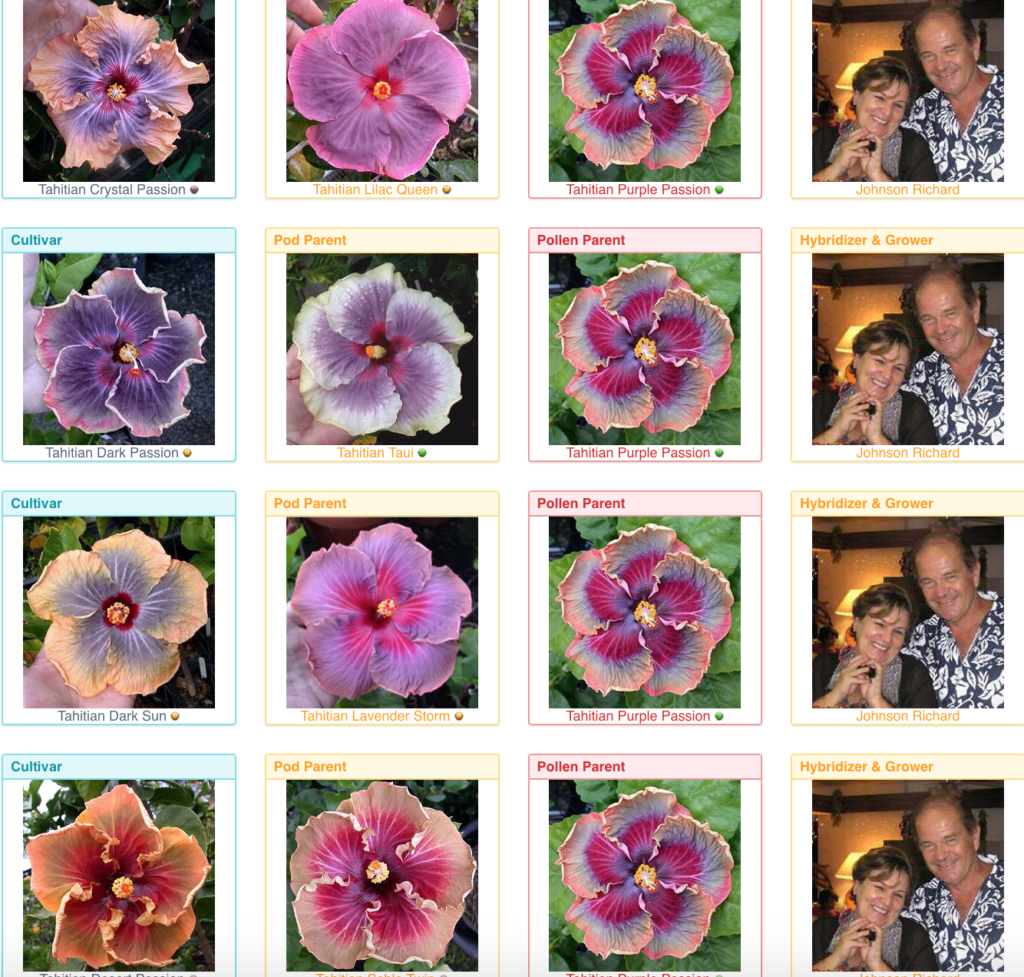
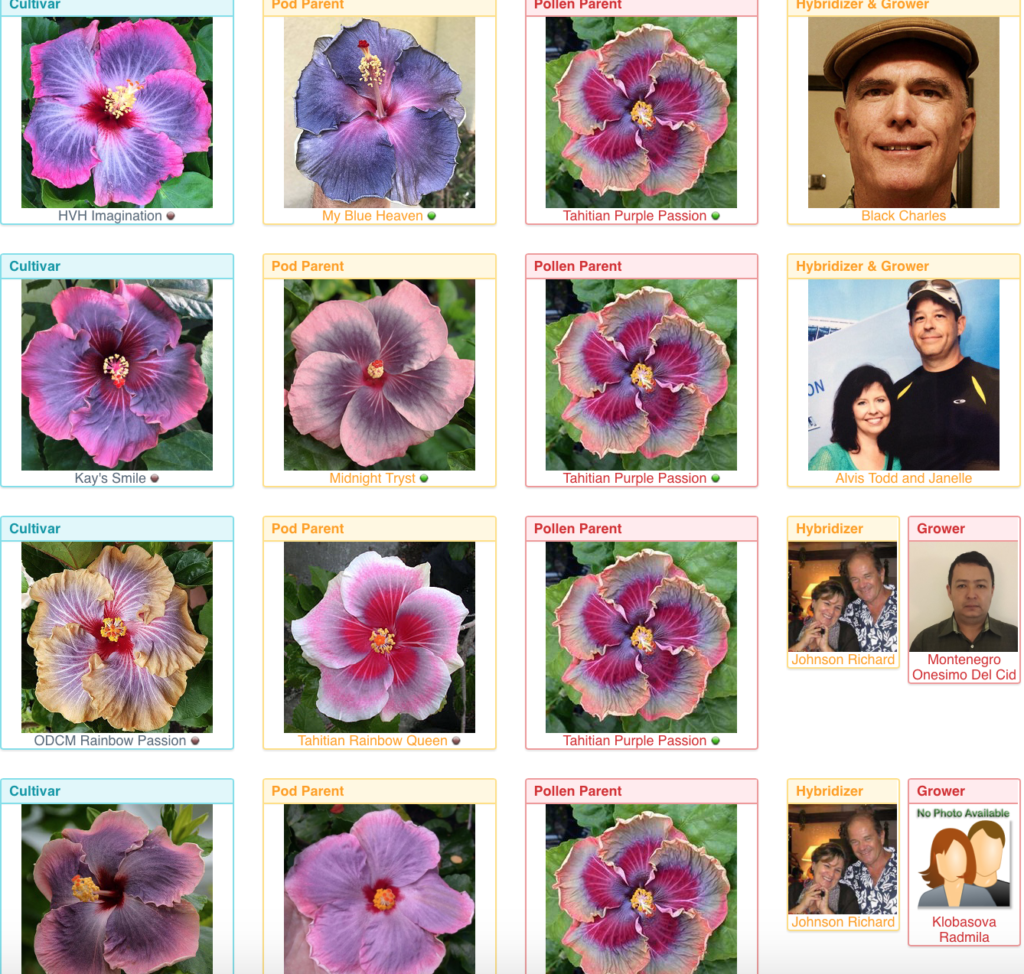
This last group of children shows Tahitian Purple Passion as the mother (pod parent). You will notice that there are two-thirds less children with it being a pod parent than as a pollen parent. So it might not be as strong of seed setter as it is as a pollen parent (hot pollen).
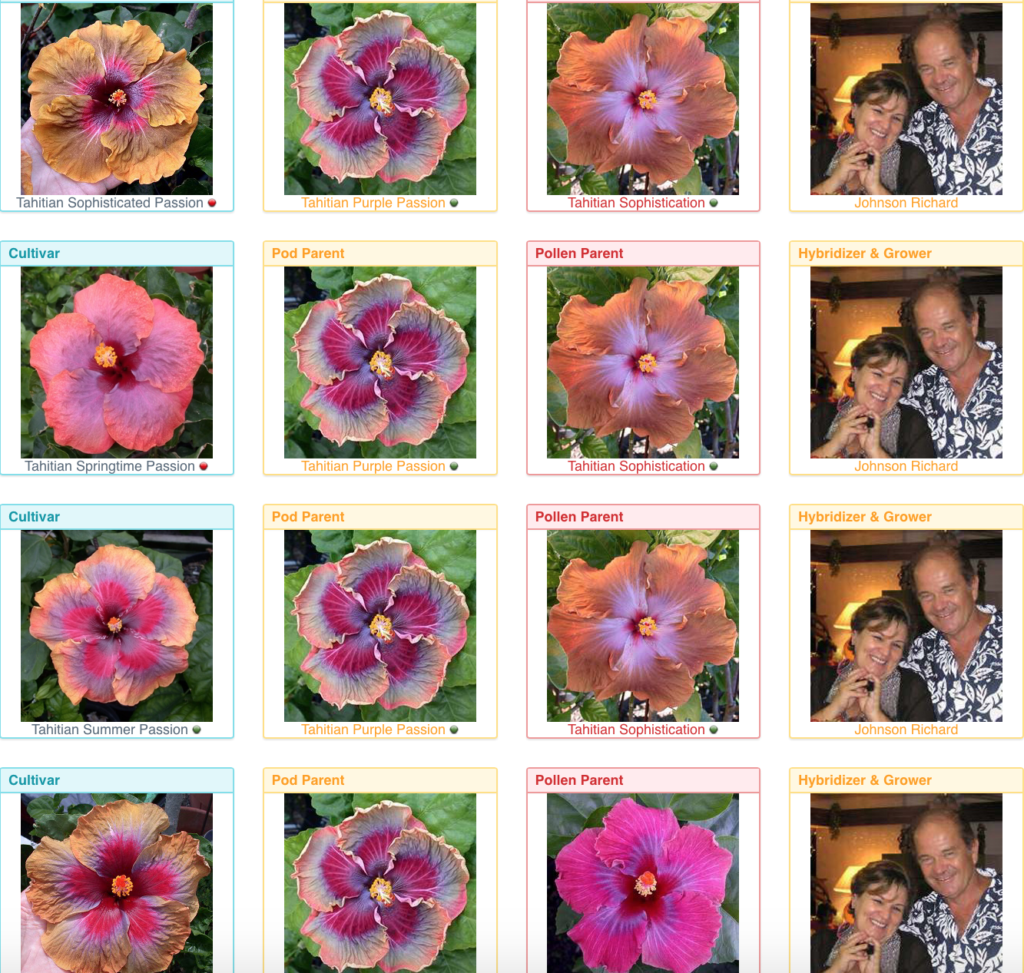
The IHS database doesn’t contain much information about the bush characteristics so it will be important to analyze the plant and growth characteristics and talk to other growers that have certain cultivars you are looking to cross to get an idea of the traits that plant has. Just like with human genetics the outcome is never a guarantee but when you start to identify trends with certain parents you can greatly increase the odds of certain outcomes you are shooting for. An example would be My Blue Heaven is a good parent at producing blue/purple blooms and James Bond is great at having children with oversized blooms. So if you are able to cross those two there is an increased likelihood you could get an oversized blue/purple bloom which is their child Pacific Ocean.
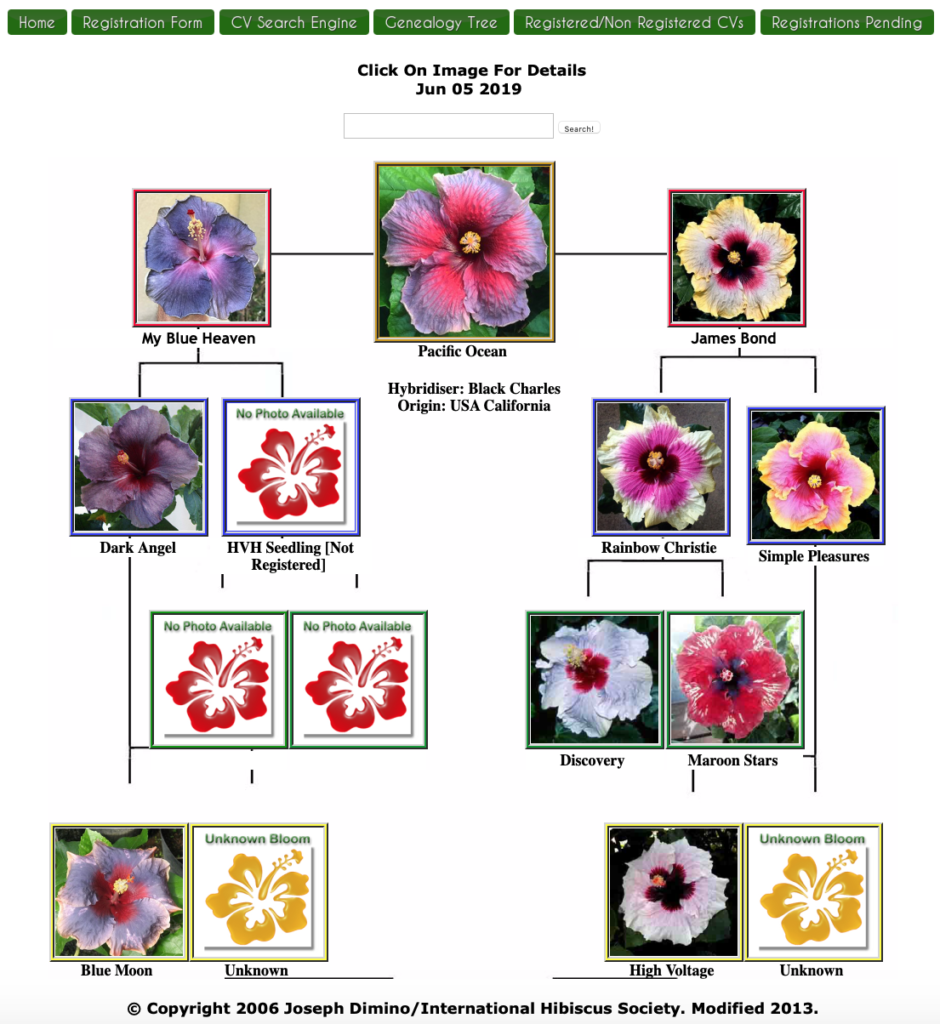
Again you are increasing the odds you can get an outcome like this based on not just the genetic traits of the parents but on the pattern of typical outcomes each parent produces. Do a search on each cultivar on the IHS search engine and you will see this. Now just like human beings you can get some surprising outcomes and we have seen many times the genes of a grandparent or great grandparent shows up out of the blue. Another great tool to use is the IHS Genealogy Search Engine to track the lineage of a cultivar. A fun example is Saffron: both parents look nothing at all like their child but when you look at the father’s side you will see the grandparent Dottie Lou with that white eye zone and orange petals.
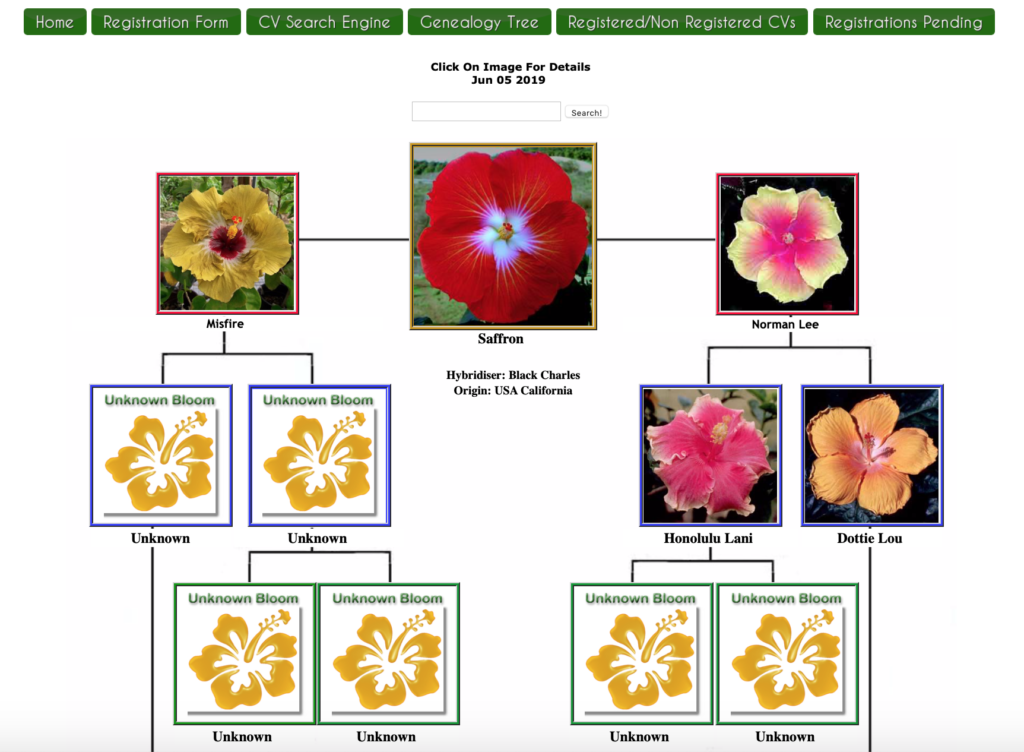
*There is one catch to this: both desired parents need to be blooming at the same time so as a hybridizer you are always at the mercy of who is available when you want to cross pollinate.
Hot Pollen and Seed Setters
Another important factor in the hybridizing process is figuring out which cultivars are good at holding seeds to maturity in a seed pod (seed setter) and which are good for pollinating with (hot pollen parent). Some cultivars are just not very good at holding seeds to maturity. Now the first thing to understand is that every hibiscus bloom is really a seed pod in the making. The part of the flower that the bloom emerges from is a seed pod. And each bloom a hibiscus plant makes already has seeds in it. They are just waiting to be fertilized from the pollen of another bloom from another plant or even from the same plant. The interesting part is that your hibiscus plant will grow out the seed pod whether or not it has been fertilized. Same idea as how a chicken lays eggs whether or not they are fertilized. So don’t get too excited when you see pods on your plants, unless you have physically pollinated them yourself the seeds inside those pods are not viable.
This also brings up an important part of hibiscus care 101. It takes a lot of energy from your plant to produce a seed pod even when the seeds are not viable. This diversion of energy will cause your plant to reduce the amount of new blooms it produces as it focuses on the growing seed pods. As a result you should always prune off (dead head) any unfertilized seed pods to maximize your bloom production for your plants.
As you grow different cultivars you will notice that some will have the tendency to drop their seed pods almost immediately after the bloom is spent and others will strongly hold on to the maturing seed pod for many months until you finally cut it off. This is the difference between a good and bad seed setter. All cultivars fall somewhere on this range from no ability to set seeds to doing it with every bloom. Some will only produce several seeds at a time and other might produce several dozen seeds per pod. Genetics and the overall conditions your plants is growing in dictate these outcomes. A good seed setter in challenging conditions might drop it’s pods constantly or produce far fewer seeds per pod than it might normally do.
The same is true for a cultivar to be a good pollen parent. Some varieties might struggle to produce fresh pollen with each bloom. When a bloom opens the pollen sacks that line the pistol will open up as the day evolves. Depending on the time of year and weather/humidity conditions the pollen sacks will open at differing times of the day. The more optimal the conditions the sooner they pollen sacks will open. In cooler weather or the winter months your blooms might have dry pollen sacks, sacks that never open or the pistol grows out of the side of the bloom and even with no pads. The plants seem to know that is not the right time to reproduce. So depending on the health of your plant and the climate conditions you might see varying amounts of pollen ready to be used to fertilize with.
You can also use the IHS search engine to see if a cultivar is a good seed setter or pollen parent. A good example would be Acapulco Gold, a well liked cultivar that is grown all over. It is well known as a plant that loves to drop it’s spent blooms with pod almost immediately after the bloom is finished. When you do a cultivar search for Acapulco Gold as a pod parent you will notice that there are surprisingly 20 children. You will further notice that all but a couple of these were hybridized in tropical climates. So this is a good way to see that if you don’t live in a tropical climate like us here in Southern California chances are strong we will not be able to use Acapulco Gold as a pod parent. As a pollen parent you can see when you use the search engine we get a lot of children of it from here in Southern California. So using the search engine is a helpful tool to see which plants might be good seed setters and/or hot pollen parents.
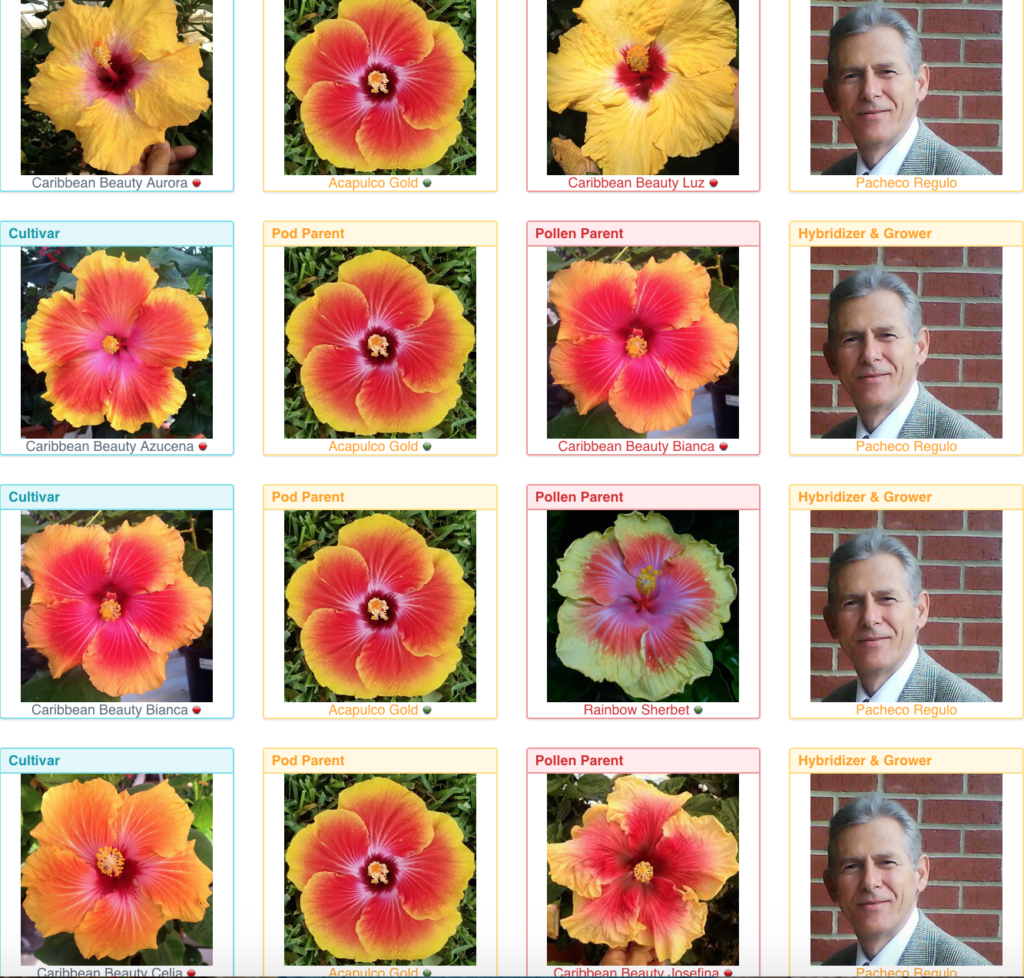
Pollinating Your Blooms
This sounds like a simple task but you have to be prepared before you start. You will need to have something to write with and tag your flowers/emerging seed pods with to track the cross like a permanent marker. Plastic tags that can be cinched are the way to go. A lot of hybridizers also use a q-tip or something similar to transfer the pollen from bloom to multiple others. This will save you a lot of time as you can pollinate multiple blooms with just one item that has lots of pollen on it. Some hybridizers also prefer to place a small bag or netting over the seed pod to protect it from birds and other garden critters.
So this seems like a straight forward and the easiest part of the hybridizing process but not necessarily. As mentioned previously the time of day in regards to temperature and humidity is important for the pollen to take. You will read over and over on our website that the ideal conditions for hibiscus to thrive in is 75-90F with humidity percentages in the same range. The same is true for when blooms are most receptive to pollen. This is why pollinating in greenhouse conditions are typically much more successful in Southern California than outdoors with our dry climate and cooler nights. But don’t get scared, we have members that get seed pods to mature throughout most of the year outdoors so it is very doable.
We have found that the best time to pollinate for outdoor blooms is mid to late morning when the temperatures are around 80F. During the summer months when it is hotter as the day goes on the air typically dries out so that point in the day where temps start to rise but it is still humid enough from the nighttime cooler temps is best.
Seed Pods
Once you have pollinated your bloom and the flower eventually falls off you will have to watch over the next 2 to 3 months to see if the pod stays on and ripens. Make sure your tags are on securely as well as any netting or bags you have placed on them for the duration. The average pod takes somewhere a little over 2 months to ripen but this can vary depending on the weather, plant metabolism and amount of sunlight. As your pod ripens it will start to turn brown and will start to split open. As soon as you see the splitting start to happen it is time to cut off your pod. This is important because if you wait too long the seeds will start to fall out and they are a challenge to see on the soil or can get eaten by birds. This is why some hybridizers put that netting around them so that if the seeds do fall out they are caught in the netting and not lost.
Storing Your Seeds
Once you have your seed pods it is best to place them inside a location that is dry. You might have to wait an additional week or two as the pod continues to ripen until it opens up enough to harvest the seeds. You can try to force it open but you do run the risk of harvesting seeds that are not mature yet. Once you get your seeds it is best to place them in a sealed zip lock plastic baggie and stored in a dry, cool and dark location. Make sure to label you bags with the cross for future tracking . A popular place for some believe it or not is in the refrigerator. If stored in this manner seeds can last for many months if not years.